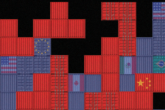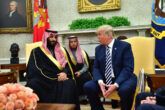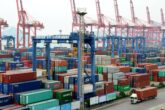August 13, 2020
For Effective Controls, Build Coalitions
“Ineffective export controls only create an illusion of security protection where, like a Maginot Line, none exists. . . .”
Export controls are some of the most powerful tools of U.S. economic statecraft, keeping exports of sensitive U.S. technology and products from undermining national security and foreign policy. Yet the United States and its allies have become less dominant in technology, which both complicates and makes essential the task of building international coalitions to implement truly effective controls without undermining long-term competitiveness. This is most urgent in the case of China.
In 2017, the United States accounted for only 28 percent of global research and development (R&D). Even U.S.-based multinationals spent 40 percent of their R&D dollars abroad, increasingly in countries that are not traditional U.S. allies. A quantitative analysis found that that export controls restricting the sale of high technology items to “medium-threat” countries like China have become less effective because multinationals have mastered using the global supply chains to “arbitrage around” controls.
Export controls are some of the most powerful tools of U.S. economic statecraft, keeping exports of sensitive U.S. technology and products from undermining national security and foreign policy.
This reality is unlikely to change, and it suggests that unilateral U.S. controls that are more restrictive than the controls of other producer countries should be used sparingly, especially for products widely available from other countries. Otherwise, controls can undermine national security without even achieving the initial goal: denying access to what was controlled.
American firms with global supply chains end up with an incentive to move their production of controlled goods and technology to a looser jurisdiction, eroding the U.S. defense industrial base. If they stay and comply, they may lose sales volumes that actually fund the R&D needed to stay on the technological frontier. Tighter controls than other countries on commercial satellites led U.S. firms to fall from 73 percent of the commercial satellite market in 1995 to 25 percent in 2005. The U.S. government should not repeat a policy in other domains that the Department of State and Department of Defense later found, “undermines the U.S. space industrial base to the detriment of U.S. national security, while doing nothing to protect” the technology it hoped to keep out of foreign rivals’ hands.
Unilateral U.S. controls that are more restrictive than the controls of other producer countries should be used sparingly, especially for products widely available from other countries.
Controls on China are most likely to effectively cut off access and provide leverage for foreign policy goals when targeted to well-defined national security threats that are also perceived as a threat by other potential technology providers. As strategic concerns about China and its industrial policy become more widespread, opportunities to build such coalitions are expanding, including in key areas such as semiconductors. Controls are less likely to work if they are aimed at holding back China’s broader technological development or are trade or industrial policy in disguise—goals other countries are unlikely to share.
About the Author
Martin Chorzempa is a Research Fellow at the Peterson Institute for International Economics.
Learn More
CNAS has asked a group of experts and policymakers to offer their perspectives on the policy goals that U.S. export controls should serve, and how and under what circumstances U.S. export controls can effectively achieve those policy goals.

Export Controls Are a Defining Instrument of U.S. National Security
A group of experts and policymakers offers their perspectives on the policy goals that U.S. export controls should serve....
Read MoreMore from CNAS
-
Game Over?
The trade wargame suggests that sustained high tariffs could create leverage and urgency to spur action toward a productive restructuring of the international trade system....
By Emily Kilcrease & Geoffrey Gertz
-
Middle East Security / Energy, Economics & Security
Trump Inks $600 Bn Deal In Saudi Arabia | Musk, Blackrock CEO Flank Trump In Gulf VisitIn today's episode of India Global, U.S. President Donald Trump secured a $600 billion commitment from Saudi Arabia on Tuesday to invest in the United States. NDTV's Gaurie Dw...
By Daniel Silverberg
-
Energy, Economics & Security / Technology & National Security
Tariffs and Tech: An Uncertain RecipeHigher tariffs could prompt American cloud companies to shift more of their capital investments abroad....
By Pablo Chavez
-
Trump Tariffs: How Will U.S. Plans Reshape the Global Economy?
Donald Trump says he's already decided the tariffs he will impose on countries that export goods to America, including the United Kingdom. Channel 4 hears from Emily Kilcrease...
By Emily Kilcrease




